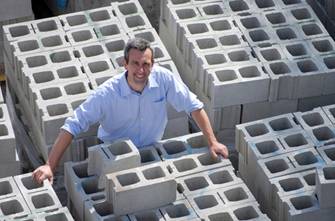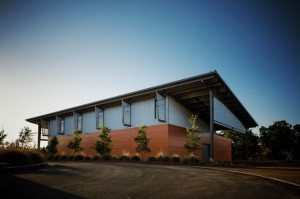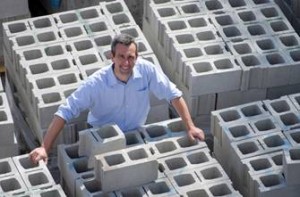February 20, 2014 – Did you know that concrete is the third largest source of human produced greenhouse gases (GHGs) on Earth? Concrete ranks second only to water as a human consumable. The average rate of consumption amounts to 3 tons per person today. Manufacturing of it contributes to 5% of all GHGs annually. That contribution is equal to half of what all automobiles and trucks in the world produce and only trails fossil fuels as the largest industrial emitter.
With the Developing World experiencing significant urbanization the need for concrete structures is expected to double globally over the next decade. That means concrete, the most versatile building material we humans ever invented, poses a significant problem for a planet dealing with human-derived climate change from increasing levels of CO2.
Concrete is derived from limestone and clay. And making concrete produces CO2 two ways. The first is called calcination. That’s when you heat limestone to 1,450 Celsius degrees. This leads to the release of calcium oxide and CO2. The second source of CO2 is in the burning of fuels to heat the kilns where the process of manufacturing is conducted. The ratio of CO2 contribution from the former is 50%. The latter is about 40%. The remaining 10% comes from transporting the finished product.
Since manufacturing is the biggest GHG producer it is the best place to start looking at ways to reduce the CO2 from the process. A Halifax, Nova Scotia company, CarbonCure Technologies, is attempting to address this challenge and has come up with a recipe for concrete that can turn the building material into a carbon sink.
CarbonCure’s solution is to sequester CO2 from industrial sources and inject it into the concrete as it is being mixed to create finished products – concrete blocks, and concrete pavers. The injected CO2 gets permanently locked in the limestone producing a stronger material. Every concrete block CarbonCure produces sequesters 30 grams of Co2. The company states that 3,000 of its concrete blocks can sequester as much CO2 as a mature tree does in a single year. Considering we globally produce 12 billion tons of concrete annually, if all of it were CarbonCure we would sequester a significant amount of carbon.
Today CarbonCure is being used for the construction of many of the buildings and sports venues for the upcoming 2015 PanAm/ParaPan Games to be held in Toronto and surroundings next summer. Most recently it has been used in the United States at UC Davis for construction of the Jesse Jackson Sustainable Winery (see image below).
The low-carbon concrete represents a critical innovation that if applied globally could turn concrete from a net emitter into an effective tool for carbon sequestration. Considering we produce 12 billion tons of the stuff every year, our atmosphere could sure use this technology. It couldn’t arrive at a better time.
Related articles across the web














At the same time that concrete contributes to GHG this material that makes up so much of our cities creates a heat sink that leads to higher temperatures in our cities. This is a real health concern during hot summer months when during the evenings the heat radiates back into the atmosphere preventing the cooling down. People (especially the elderly and those on certain medications) in apartment buildings are vulnerable to heat illnesses. Several years ago this mechanism contributed to the deaths of thousands during the heatwave in France.
It is hard to imagine a way out of a world with a foundation on concrete. But, back in the 70’s or 80’s the Coney process was devised to produce cement using a mechanical impact method. It still requires power, but it can be mechanical power such as the rotor of a turbine.